Cream puffs, a delightful French pastry, have gained immense popularity in Vietnam. Despite variations in the recipe, the pastry dough is considered the most challenging component. The following article will guide you through addressing runny dough and common mistakes to create aesthetically pleasing and delectable cream puffs.
 Cream puffs originated in France
Cream puffs originated in France
1 What to Do If Your Cream Puff Dough Is Runny?
Firstly, if you encounter runny dough, carefully check the ingredients and their proportions, including , , and .
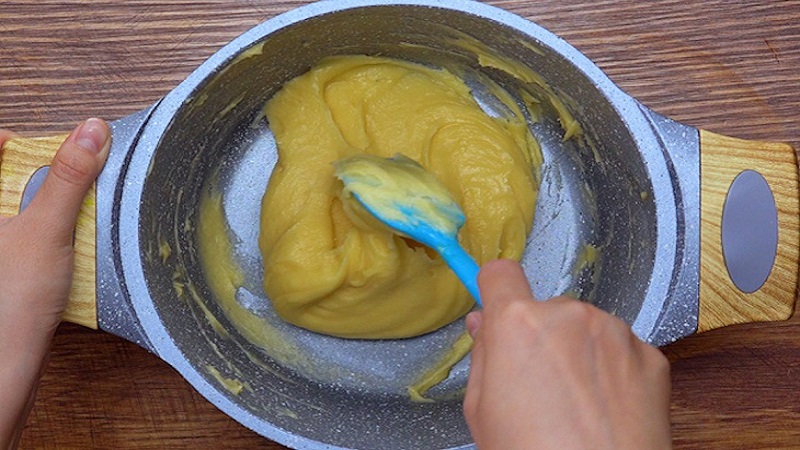 Runny cream puff dough
Runny cream puff dough
- Eggs: Opt for eggs at room temperature, avoiding chilled or refrigerated eggs as the yolks and whites may have partially solidified.
- Butter: Unsalted butter, or , is ideal. In its absence, is a suitable alternative. Refrain from using butter with high water content, which can affect the recipe and result in soggy dough.
- Flour: All-purpose flour is the best choice. If desired, you can substitute it with bread flour instead of .
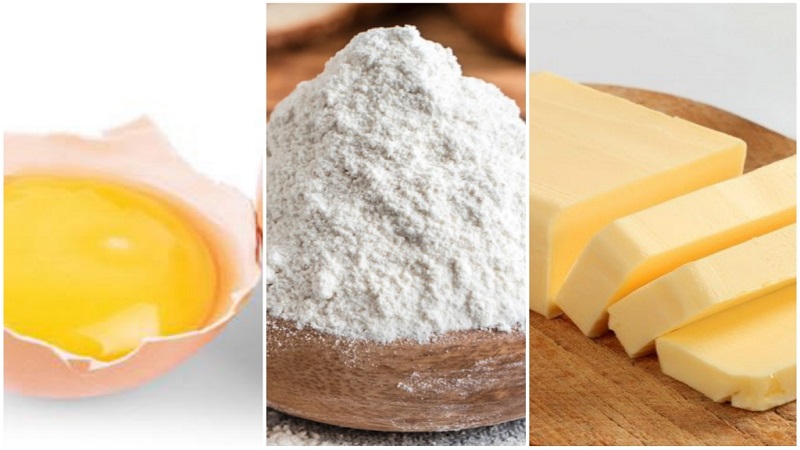 Scrutinize the ingredients used
Scrutinize the ingredients used
2 Common Mistakes to Avoid When Making Cream Puffs
Under-baked or poorly risen puffs
The presence of eggs in the batter is crucial to the puffs’ rise; the whisking action incorporates air and moisture, causing the pastries to expand during baking without relying solely on baking powder.
Should your puffs fail to rise adequately, promptly re-evaluate the ingredients and their ratios. Often, using eggs that are too small or too large can impact the rise.
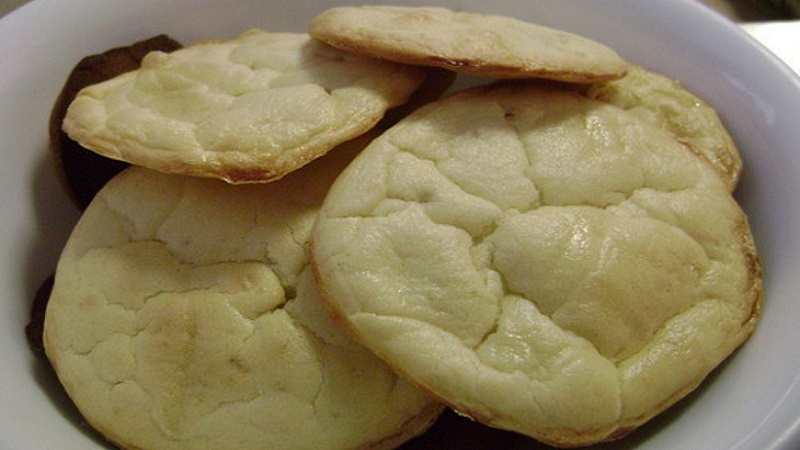 Under-risen dough
Under-risen dough
Puffs deflating upon removal from the oven
In addition to eggs, water plays a pivotal role in the puffs’ rise. During baking, the evaporation of water creates steam, causing the pastries to puff up.
If your puffs deflate as soon as they’re out of the oven, re-evaluate the amount of water added to the dough and adjust accordingly.
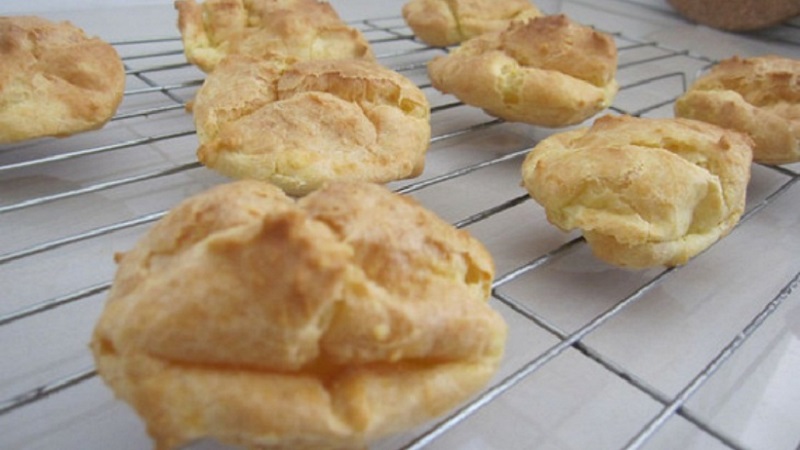 Deflated puffs upon removal from the oven
Deflated puffs upon removal from the oven
3 Tips for Making Tastier Cream Puffs
Scrutinize the quality of your ingredients: eggs, butter, and flour.
Adhere meticulously to the recipe and precise measurements.
Opt for medium-sized eggs and allow them to reach room temperature if they’ve been refrigerated, thus preventing the formation of excessive air bubbles during baking.
During preparation:
- Boil butter and water together until fully melted and blended for convenient dough mixing. Avoid prolonged heating, which may degrade the butter’s quality and negatively impact the pastries.
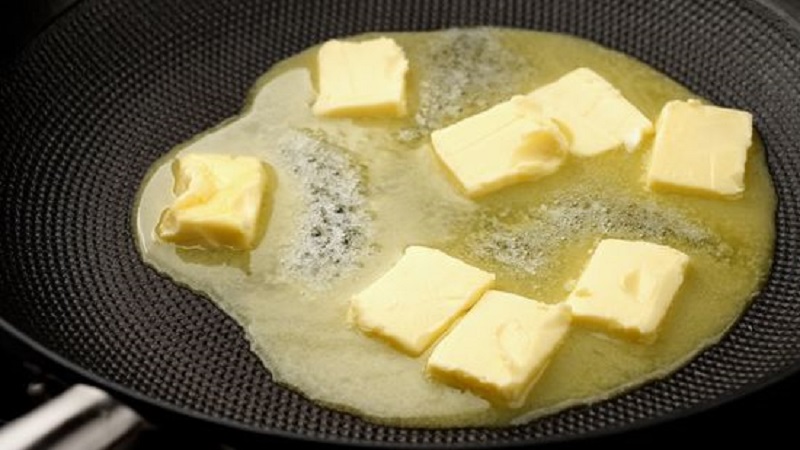 Melt butter thoroughly on the stove
Melt butter thoroughly on the stove
- Thoroughly mix the ingredients before baking. Prolonged mixing can cause moisture loss in the dough, resulting in dryness.
 Mix the dough thoroughly
Mix the dough thoroughly
- Gradually add the eggs to ensure even distribution rather than dumping them in at once.
 Gradually add the eggs
Gradually add the eggs
During baking:
- Preheat your oven for about 10 minutes before baking.
- Adjust the baking temperature to between 190°C and 220°C (374°F and 428°F).
- Refrain from opening the oven door frequently.
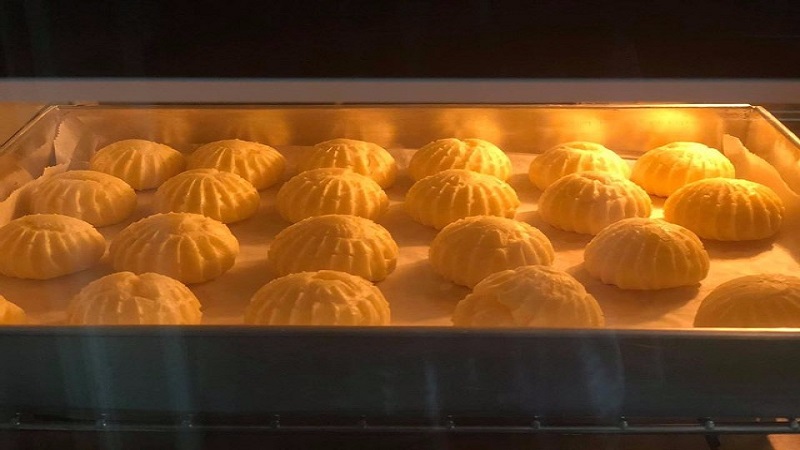 Baking cream puffs
Baking cream puffs
This article has addressed common issues with , and we hope it empowers you to troubleshoot and successfully create delectable cream puffs!






































